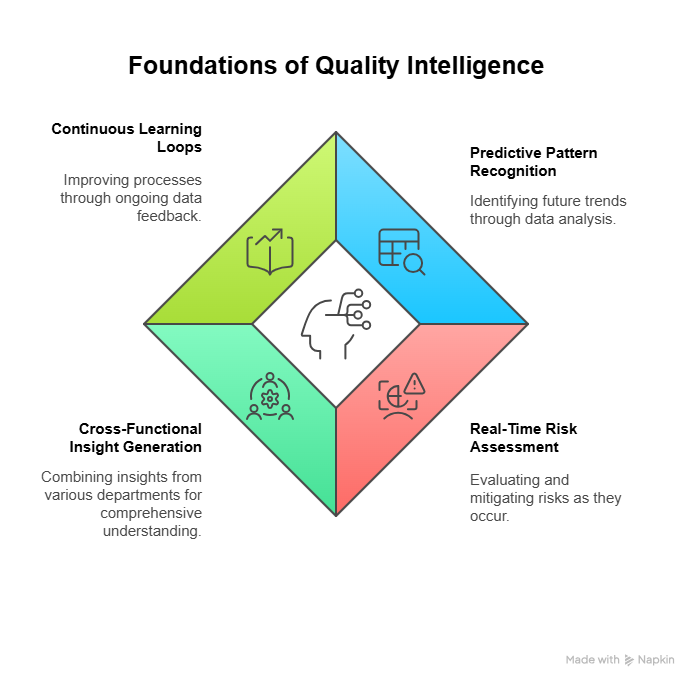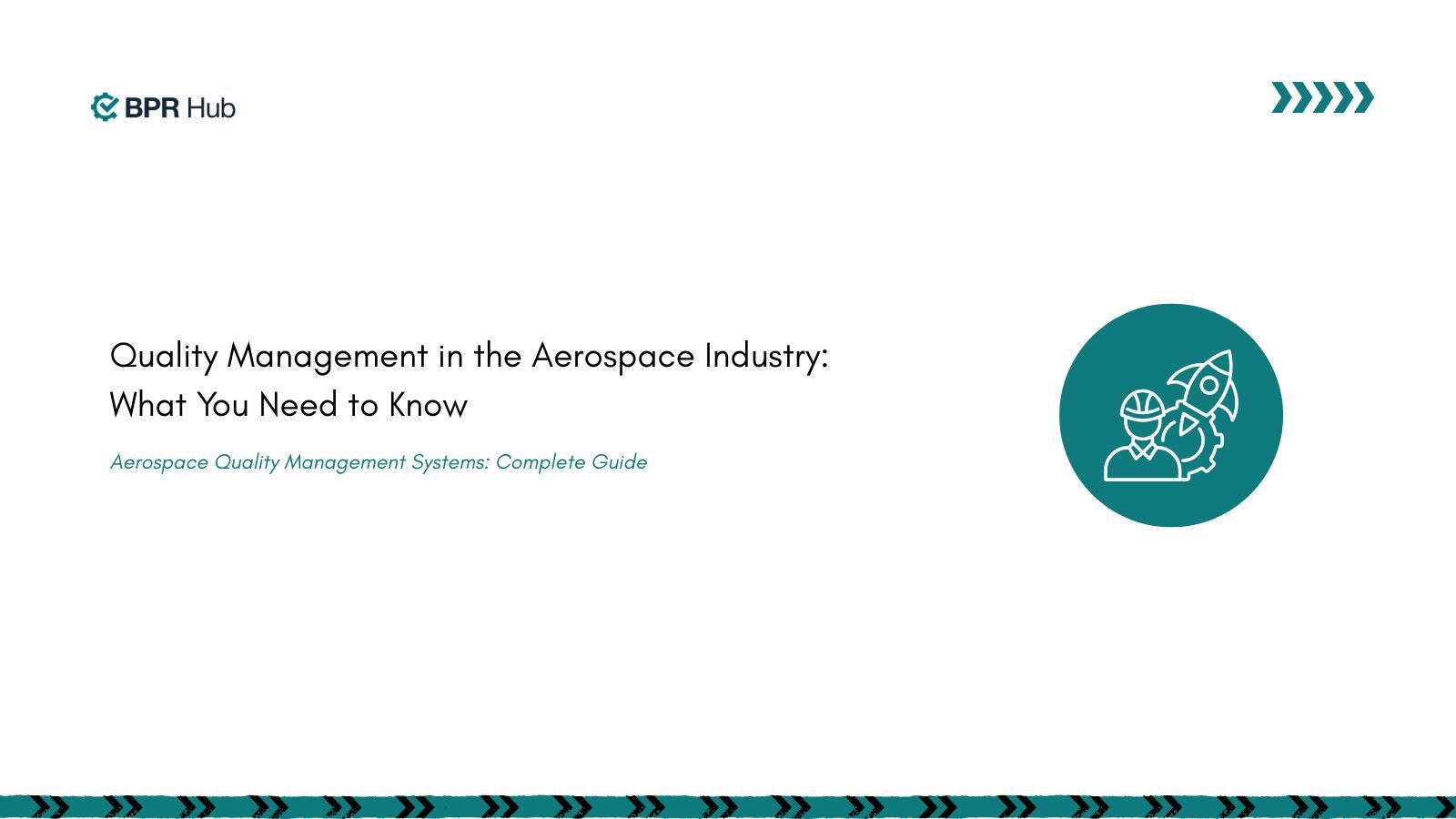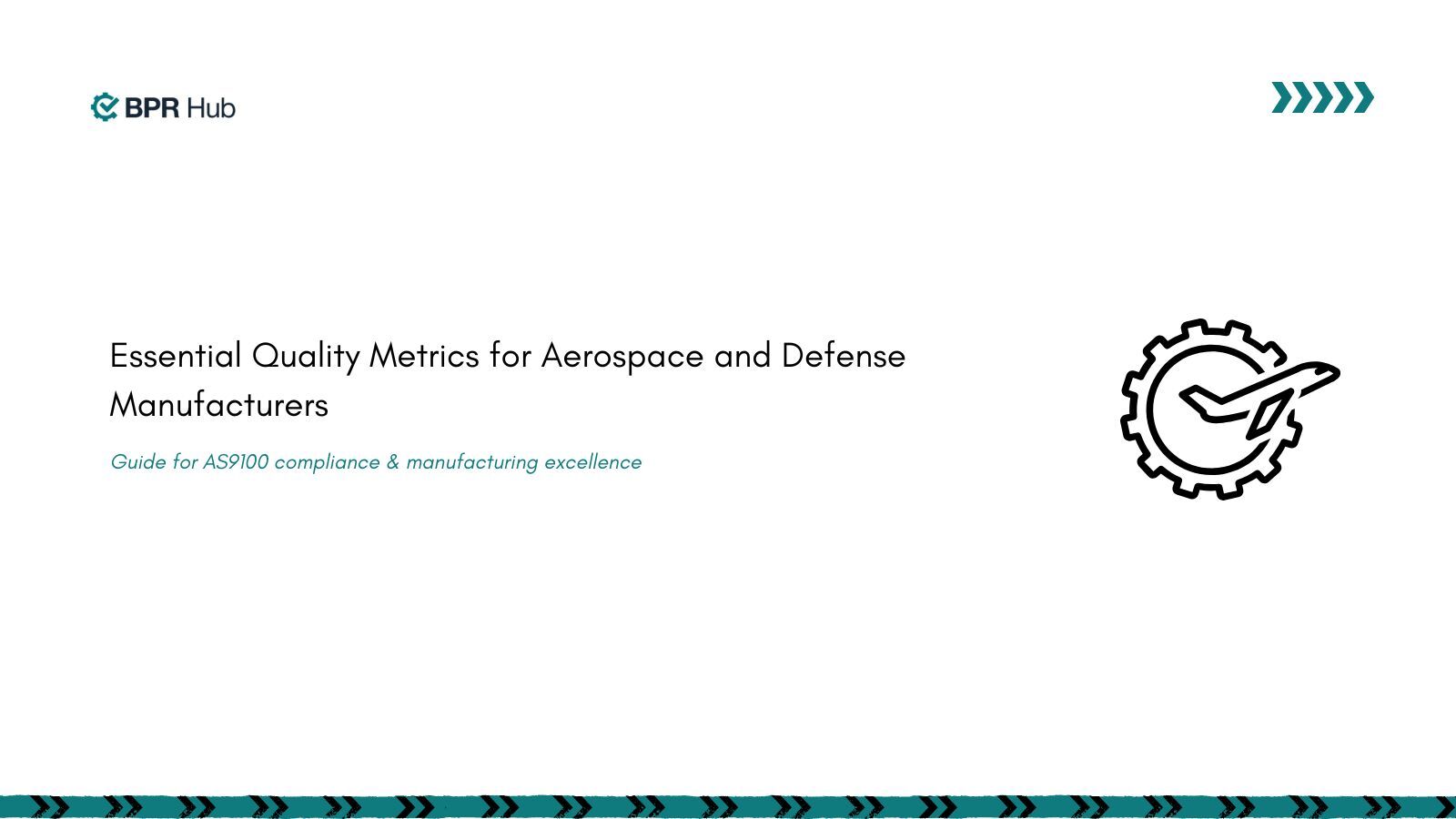The quality manager stared at three filing cabinets full of perfectly organized documentation. Every process was mapped, every procedure was current, and every form was completed in triplicate. Their quality management system was a masterpiece of bureaucratic precision.
Then their biggest competitor launched a superior product six months ahead of schedule while maintaining zero defects. How? They weren't drowning in documentation—they were surfing waves of quality intelligence.
The difference wasn't better record-keeping. It was the fundamental shift from quality as documentation to quality as a competitive advantage through intelligent systems. While one company was perfecting their paperwork, the other was perfecting their prediction capabilities using predictive analytics in manufacturing.
Welcome to the intelligence revolution in manufacturing quality—where data becomes insight, insight becomes action, and action becomes advantage.
The Documentation Trap
For decades, quality management has been synonymous with documentation management. Write procedures, follow procedures, document everything, file everything. The assumption was simple: if we record what happened, we can prevent bad things from happening again.
This approach worked in stable manufacturing environments where problems were predictable, changes were gradual, and customer expectations moved slowly. Documentation served as institutional memory—a way to capture lessons learned and ensure consistent execution.
But documentation is fundamentally backward-looking. It tells you what happened, not what will happen. It records problems after they occur rather than preventing them before they start. In today's fast-moving manufacturing landscape, that's like driving a race car while staring in the rearview mirror.
Companies trapped in documentation mode become historians of their own failures rather than architects of their future success. They can tell you exactly how every problem unfolded, but they can't tell you which problems are developing right now.
What Quality Intelligence Actually Means
Quality intelligence transforms data from a recording device into a prediction engine. Instead of documenting what went wrong, it identifies what will go wrong before it happens. Instead of tracking problems after they occur, it spots patterns before they become problems.
Think of traditional quality systems as smoke detectors—they sound an alarm after the fire starts. Quality intelligence is like a thermal imaging system that identifies hot spots before ignition occurs. Same building, same goal, but fundamentally different approach to protection.
Real quality intelligence connects seemingly unrelated data points to reveal hidden patterns. It notices that supplier delivery delays correlate with quality issues three weeks later. It recognizes that certain environmental conditions predict process drift. It identifies which customer requirements changes will stress which manufacturing processes.
This isn't about having more data—most manufacturers are drowning in data. It's about extracting more insight from the data you already collect. It's the difference between information and intelligence.
📍 Book a Demo
📧 hello@bprhub.com
From Cost Center to Profit Engine Using Predictive Analytics in Manufacturing
Traditional documentation-focused quality management is pure cost. Every procedure written, every form completed, and every audit conducted consumes resources without directly generating revenue. Quality becomes the department of "no"—the group that slows things down in the name of compliance.
Quality intelligence flips this equation entirely. Instead of consuming resources to prevent problems, it generates insights that create opportunities. Process optimization recommendations that reduce waste. Supplier performance predictions that prevent disruptions. Customer requirement analysis that guides product development.
Consider a precision components manufacturer that shifted from documentation to intelligence. Their old system could tell them about quality issues an average of 12 days after they occurred. Their intelligent system now predicts quality risks 14 days before they happen—a 26-day improvement in response time.
The financial impact was immediate. Instead of scrambling to fix problems, they prevented them. Instead of expediting materials to recover from disruptions, they optimized supply chains proactively. Instead of losing customers to quality issues, they improved products before customers noticed problems.
Their quality function transformed from a $2.3 million annual cost center into a source of $4.7 million in annual operational improvements.
The Four Pillars of Quality Intelligence

Effective quality intelligence rests on four foundational capabilities that traditional documentation systems simply cannot provide.
Predictive Pattern Recognition
Intelligence systems identify patterns that human analysis misses. They connect supplier performance data with manufacturing process variations, correlate environmental conditions with product quality outcomes, and link customer feedback trends with design characteristics.
A medical device manufacturer discovered through predictive analytics in manufacturing that their field failure rates correlated strongly with specific production shift schedules—something no amount of documentation review had revealed. The insight led to training improvements that reduced field failures by 40%.
Real-Time Risk Assessment
While documentation systems record risks after they become problems, intelligence systems calculate risk probabilities in real time. They continuously assess process stability, supplier reliability, and quality performance to provide early warning of potential issues.
This means shifting from "we had a problem last month" to "we have a 73% probability of a problem next week unless we adjust these three parameters." The difference between reactive management and proactive control is what drives competitive advantage.
Cross-Functional Insight Generation
Traditional quality documentation stays within quality departments. Quality intelligence systems break down silos by automatically sharing relevant insights with engineering, procurement, manufacturing, and sales teams when those insights can drive better decisions.
When supplier quality data reveals a material consistency issue, engineering teams get automatic alerts to consider design modifications. When process data shows drift patterns, procurement teams get early warnings to diversify suppliers. Intelligence flows where it's needed, not where it's filed.
Continuous Learning Loops Through Predictive Analytics in Manufacturing
Documentation captures what happened once. Quality intelligence systems learn from every data point to improve future predictions. Each quality incident, process adjustment, and outcome feeds back into the system's predictive models, making them more accurate over time.
The system becomes smarter with every problem it helps prevent and every optimization it enables. Instead of static procedures that require manual updates, you have dynamic intelligence that evolves automatically.

Intelligence in Action: Beyond Theory
The transformation from documentation to intelligence isn't theoretical; it's happening now across manufacturing industries. Companies that embrace this shift are creating sustainable competitive advantages that documentation-focused competitors cannot match.
An automotive supplier used quality intelligence to identify that specific material lot characteristics predicted customer complaints six weeks before those complaints typically surfaced. By flagging these lots proactively, they reduced customer quality issues by 65% while improving supplier relationships through earlier, more constructive feedback.
An aerospace manufacturer deployed intelligence systems that analyzed the correlation between manufacturing process parameters and long-term product performance in the field. The insights enabled them to optimize processes for durability rather than just immediate quality metrics, resulting in products that outperformed specifications and commanded premium pricing.
A pharmaceutical equipment manufacturer used quality intelligence to predict which product configurations would encounter regulatory scrutiny during approval processes. By addressing these issues proactively in design phases, they reduced average approval times from 14 months to 8 months—a massive competitive advantage in fast-moving markets.
The Network Effect of Intelligence
Perhaps the most powerful aspect of quality intelligence is how insights compound across your entire operation. Unlike documentation that stays siloed in filing systems, intelligence creates network effects where each insight enables additional insights.
Process optimization in one area reveals opportunities in related areas. Supplier performance improvements in one category suggest strategies for other categories. Customer feedback analysis for one product line guides improvements across your entire portfolio.
A electronics manufacturer found that quality intelligence insights from their consumer products division led to breakthrough improvements in their industrial products division. The pattern recognition algorithms identified design principles that improved reliability across completely different applications—insights that would never have emerged from traditional documentation analysis.
Making the Transition to Predictive Analytics in Manufacturing
The shift from documentation to intelligence doesn't require abandoning all existing systems overnight. Smart manufacturers are creating hybrid approaches that maintain compliance requirements while building intelligence capabilities.
Start by identifying your highest-impact quality decisions—the choices that most significantly affect customer satisfaction, operational efficiency, or competitive positioning. These decisions typically involve supplier selection, process optimization, or product development priorities.
Next, examine what data you currently collect around these decisions and ask: "Are we using this information to predict future outcomes or just to record past events?" The gap between current data collection and predictive capability reveals an intelligence opportunity.
The goal isn't to eliminate documentation—compliance requirements still exist. The goal is to generate intelligence as a byproduct of compliance activities rather than treating compliance as the end goal itself.
The Intelligence Advantage
Manufacturing companies that make this transition discover something remarkable: quality intelligence creates advantages that are difficult for competitors to replicate. Unlike cost advantages that can be matched through scale or efficiency improvements, intelligence advantages compound over time.
Your predictive models become more accurate. Your insight generation becomes more sophisticated. Your decision-making becomes more proactive. Meanwhile, competitors stuck in documentation mode continue optimizing backward-looking processes while you optimize forward-looking capabilities through predictive analytics in manufacturing.
The manufacturers leading their industries tomorrow won't be the ones with the most comprehensive documentation systems. They'll be the ones who transformed quality data into quality intelligence and quality intelligence into competitive advantage.
The question isn't whether to make this transition—it's whether to lead it or follow it.
Ready to transform quality from a compliance cost into a competitive advantage? Discover how Quality Intelligence through integrated QCG creates sustainable differentiation in your market.
📍 Book a Demo
📧 hello@bprhub.com
Frequently Asked Questions
What is quality intelligence, and how does it differ from traditional quality management?
Quality intelligence transforms manufacturing data into predictive insights rather than just documenting past events. Unlike traditional quality systems that record problems after they occur, quality intelligence uses predictive analytics in manufacturing to identify potential issues before they happen, creating proactive rather than reactive quality management.
How can predictive analytics in manufacturing improve my competitive advantage?
Predictive analytics in manufacturing enables companies to prevent problems before they occur, optimize processes in real-time, and make data-driven decisions faster than competitors. This creates a sustainable competitive advantage by reducing costs, improving quality, and enabling faster response to market changes that documentation-based systems cannot match.
What are the key benefits of implementing quality intelligence systems?
Quality intelligence systems provide real-time risk assessment, predictive pattern recognition, and cross-functional insights that transform quality from a cost center into a profit generator. Companies typically see 26-day improvements in response time, 40% reduction in field failures, and millions in operational improvements through predictive analytics in manufacturing.
How do I transition from documentation-based quality to quality intelligence?
Start by identifying your highest-impact quality decisions and examining current data collection practices. Focus on generating predictive analytics in manufacturing insights from existing compliance activities rather than treating documentation as the end goal. This creates a competitive advantage while maintaining regulatory requirements.
What makes quality intelligence sustainable as a competitive advantage?
Quality intelligence creates compound advantages that improve over time through continuous learning loops. Unlike cost advantages that competitors can match, intelligence systems become more accurate with each data point, making predictive analytics in manufacturing capabilities increasingly difficult for competitors to replicate while building lasting competitive advantage.
Get insights that help you minimize risks and maximize profits.
Dive deeper into manufacturing compliance with our free resources.
We get it, compliance can get tough.
Here are some additional resources to help.
We get it, compliance can get tough. Here are some additional resources to help.
Get updates in your inbox

.svg)
%20(1).svg)





%20(1).svg)

.avif)

